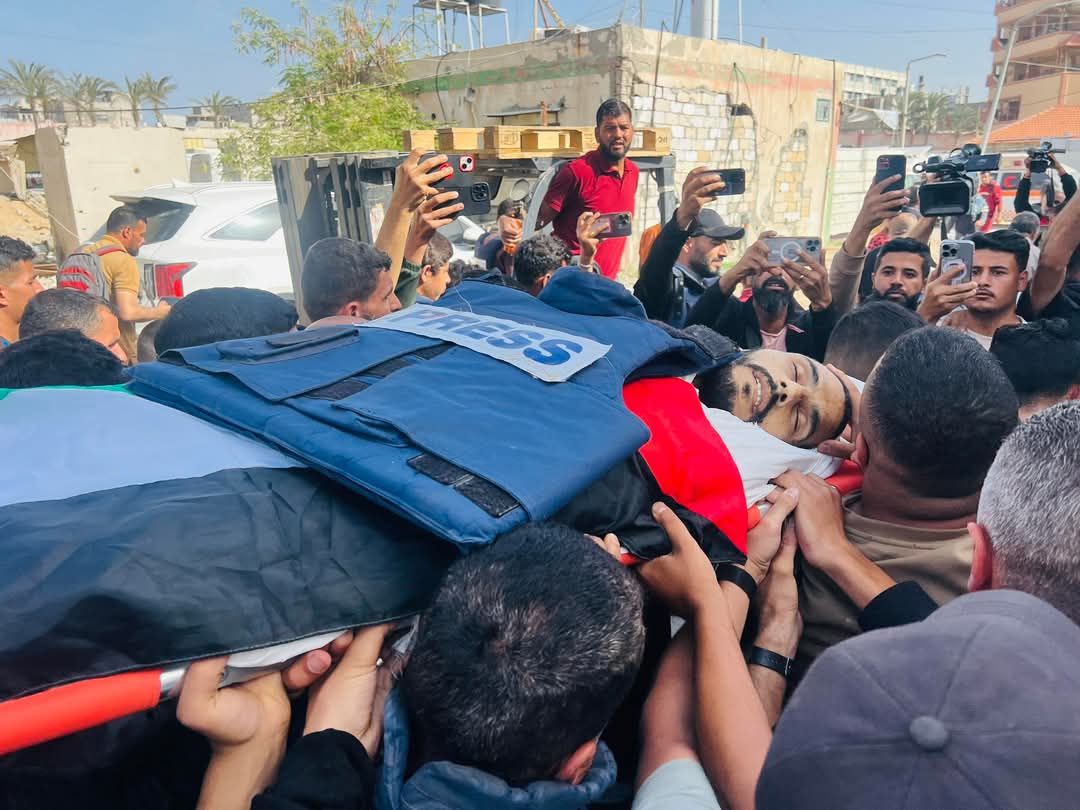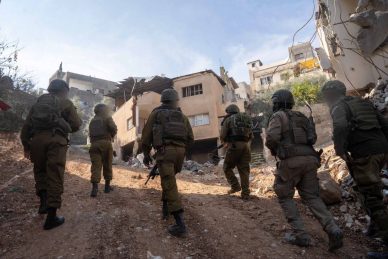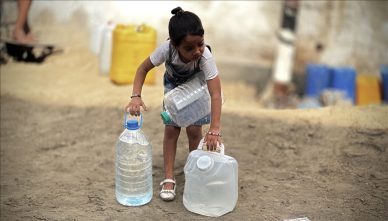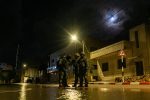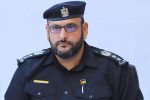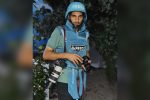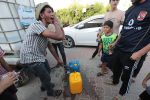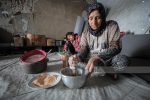GAZA, (PIC)
From a conveyor of news to the news itself—Palestinian journalist Hassan Eslayeh was killed by an Israeli missile strike in a brutal attack while lying on a hospital bed in Nasser Medical Complex in Khan Yunis, where he had been receiving treatment from injuries sustained 37 days earlier.
In the early hours of Tuesday, May 13, Hassan’s pen fell silent. The stream of urgent updates that once flowed through his Telegram channel—followed by more than 750,000 people—came to a sudden halt. He became a headline himself, joining the ranks of 215 journalists killed since the start of the genocide.
Hassan is gone, but his voice—familiar to us from under the rubble—and his smile, ever-present in his field reports, remain etched in memory. He dedicated his life to defending the oppressed and bringing Gaza’s pain to the world, right up until his final moments.
His last post, just after midnight, reported on Israeli shelling south of Khan Yunis. Hours later, he was the news.
This was not the first time Hassan had been targeted by Israeli forces. Known for his relentless energy, swift movement, and real-time coverage supported by diverse, reliable sources, Hassan had become a trusted reference—not only for local and international media, but for Palestinians and Arabs who relied on him as a primary source of updates, especially during the ongoing war. His Telegram channel surpassed even major international outlets in reach.
On April 7, Hassan was seriously injured when Israeli warplanes bombed a tent designated for journalists outside the very same Nasser Medical Complex. That attack killed journalist Helmi Al-Faqawi, young man Youssef Al-Khazindar, and journalist Ahmed Mansour, and wounded 10 other journalists.
Before that, Hassan had faced incitement and threats from Israeli forces and affiliated actors. He was also a frequent target of online incitement campaigns by figures dubbed the “Avichay Cell,” who brazenly called for his death.
Hassan wore no special protective armor—his only shield was his camera and his love for the truth. He was among the first to document massacres in Khan Yunis and Rafah during this war. Even while injured, he continued reporting from his hospital bed.
The Israeli military took responsibility for the strike that killed Hassan, claiming his “crime” was covering the Al-Aqsa Flood operation. This justification, both legally and morally bankrupt, cannot excuse the killing of a civilian journalist inside a hospital. It is part of a broader pattern of targeting journalists in Gaza—blatant violations of international humanitarian law, which protects journalists as civilians.
The human behind the lens
Hassan wasn’t just a journalist. He was a kind, humble man, close to the people—sharing in their joys, mourning their losses, and turning their personal stories into powerful visual reports.
His fieldwork over the years made him a familiar face on social media, especially as global attention toward Palestinian suffering grew.
Friends and colleagues mourned him with heavy hearts, praising his professionalism, his constant presence on the ground, and his unmatched ability to deliver human stories from the eye of the storm.
Reactions and condemnations
Media organizations and human rights groups—local and international—strongly condemned the assassination of Hassan Eslaiah, calling it a “full-fledged war crime.” They demanded an international investigation and legal accountability for the Israeli leaders orchestrating what they describe as a war of extermination against journalists and media institutions in Gaza.
With Hassan’s death, Palestinian media loses one of its brightest and most committed figures—someone who dedicated his life to telling the truth from beneath the rubble, amidst blood and tears.
His body may be gone, but the images he captured will live on—testament to the nobility of his mission and the dignity of his message.

